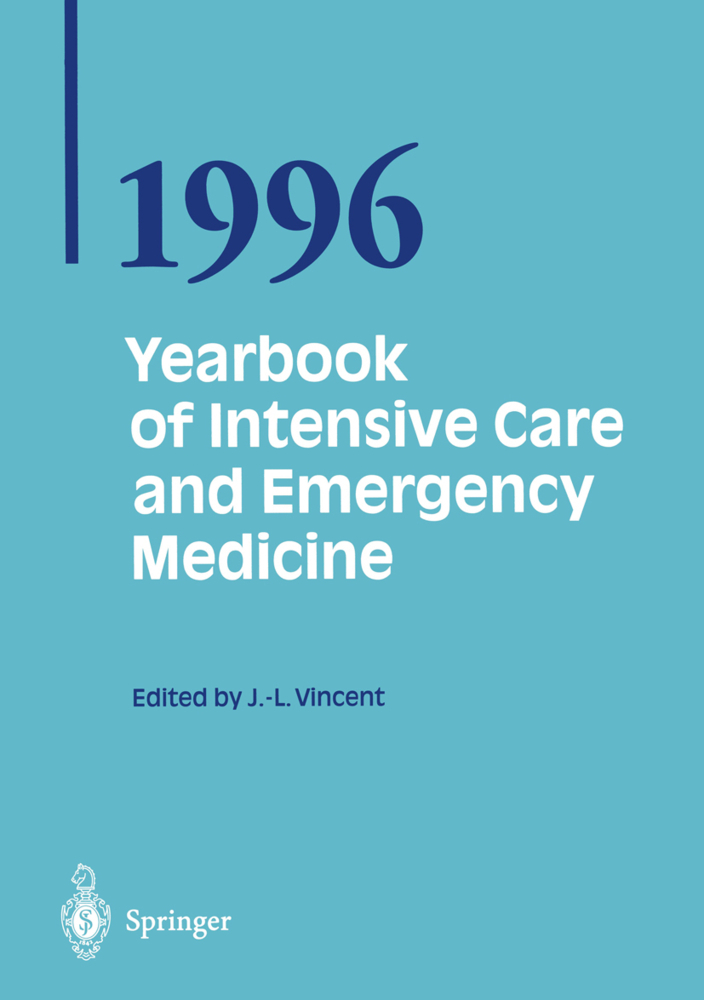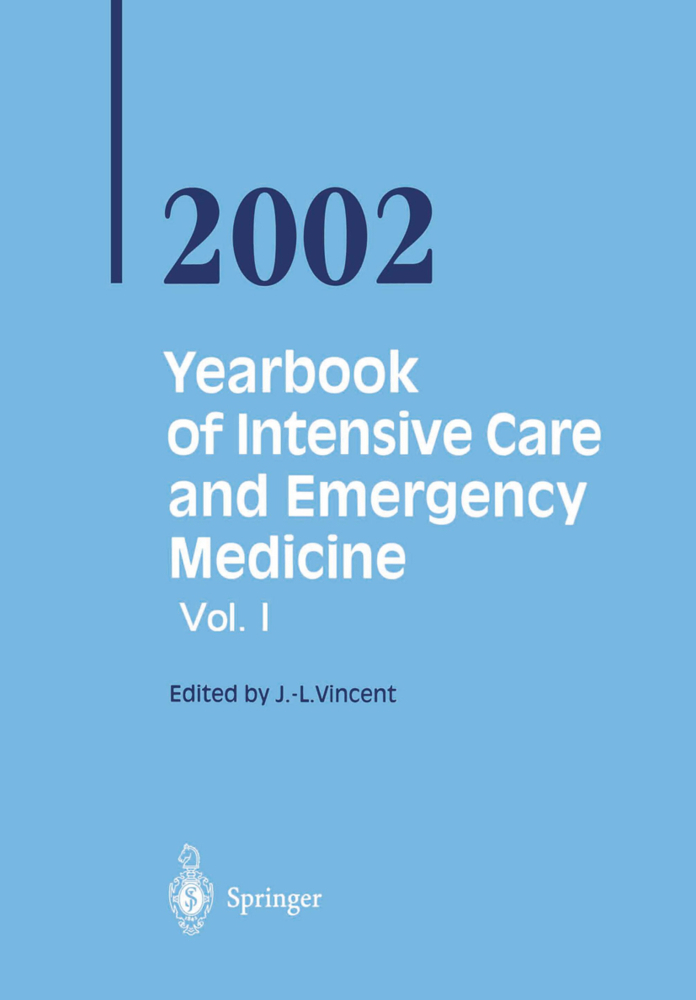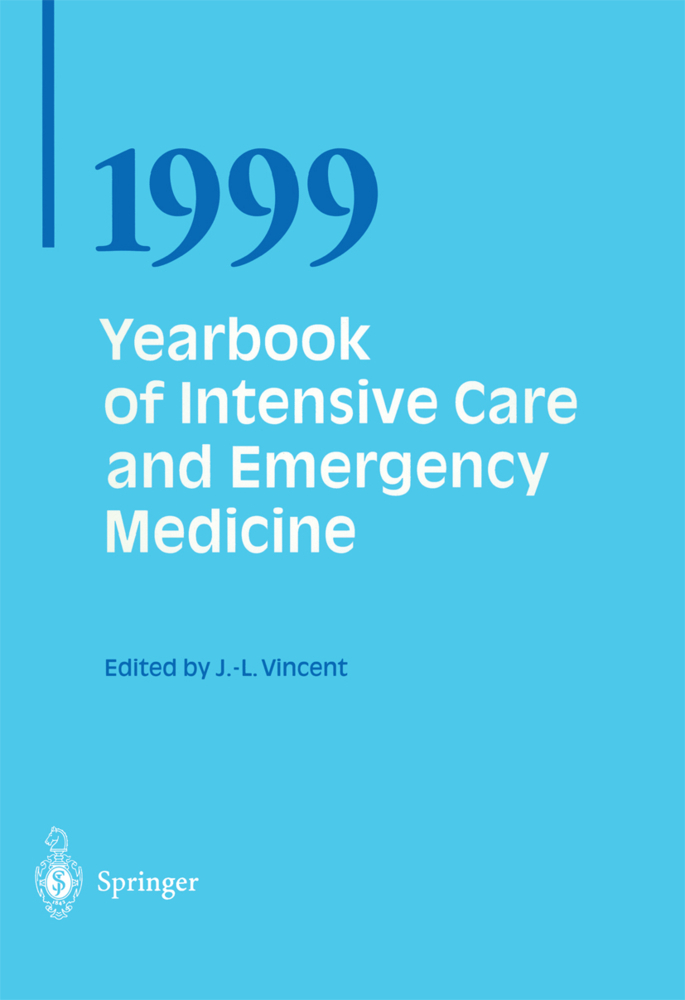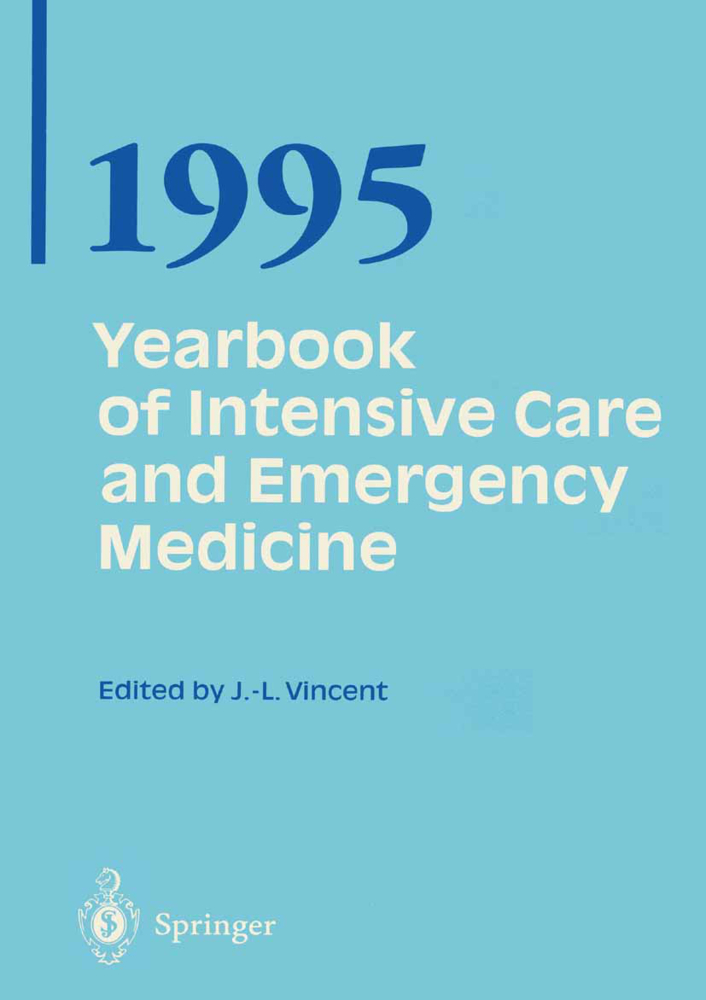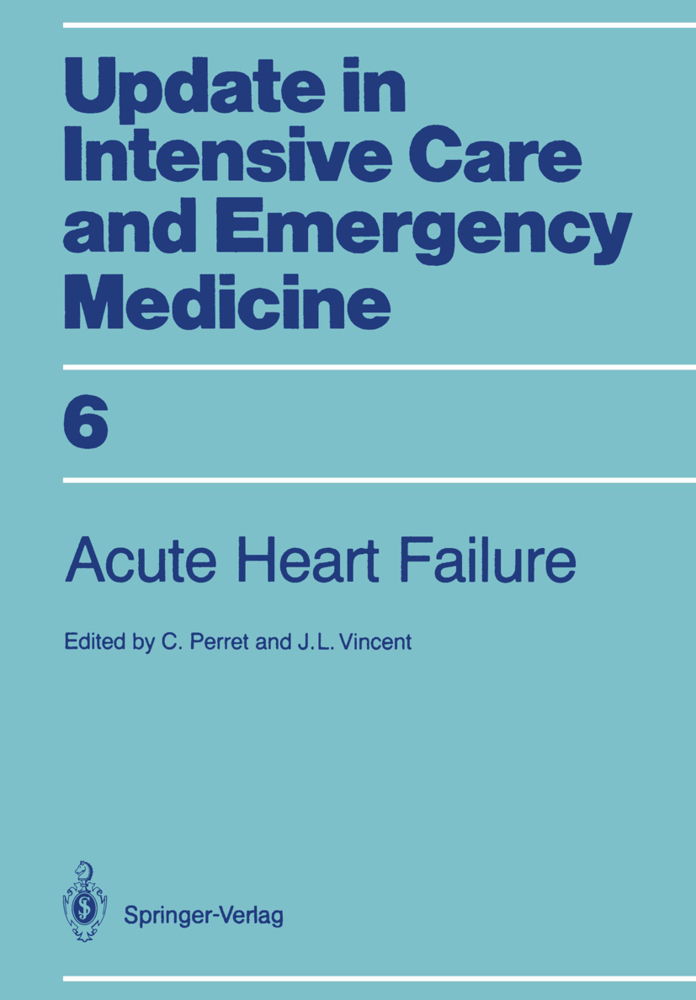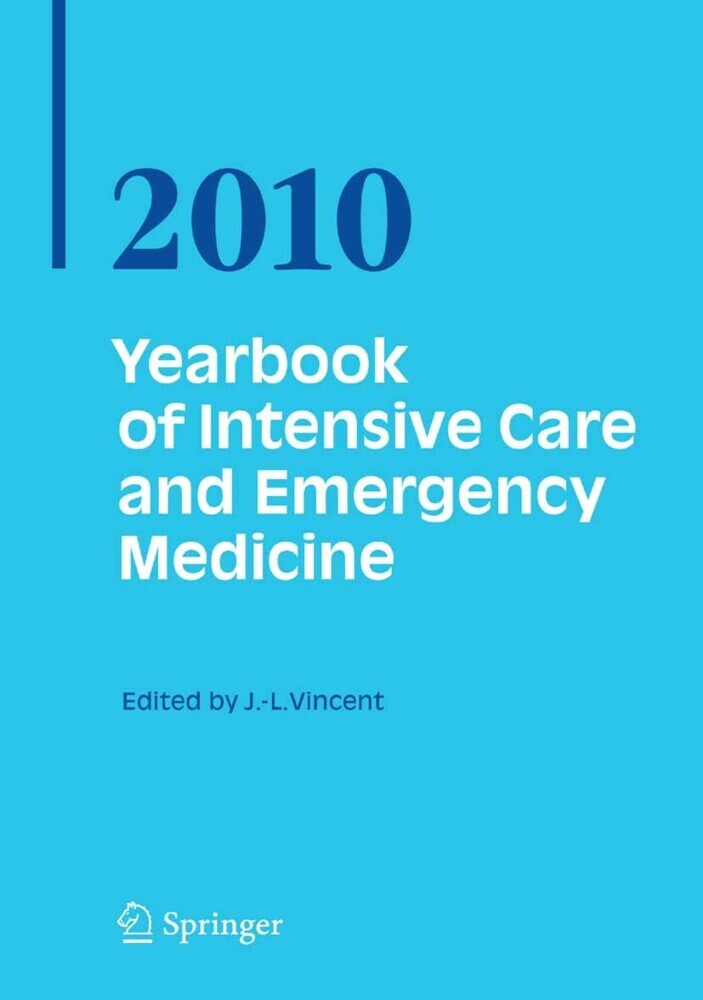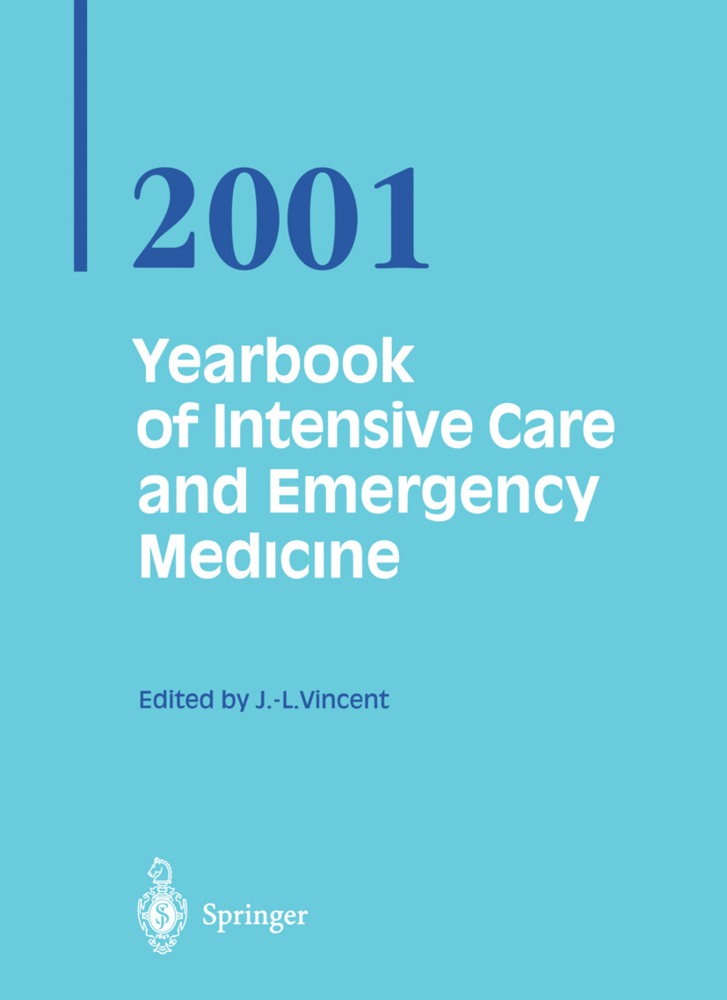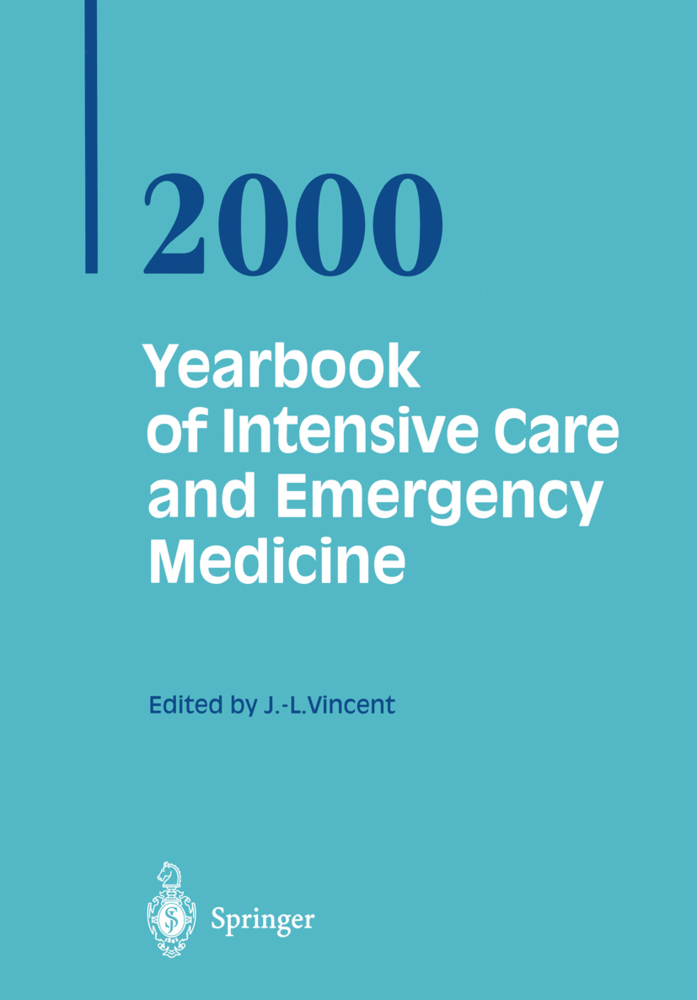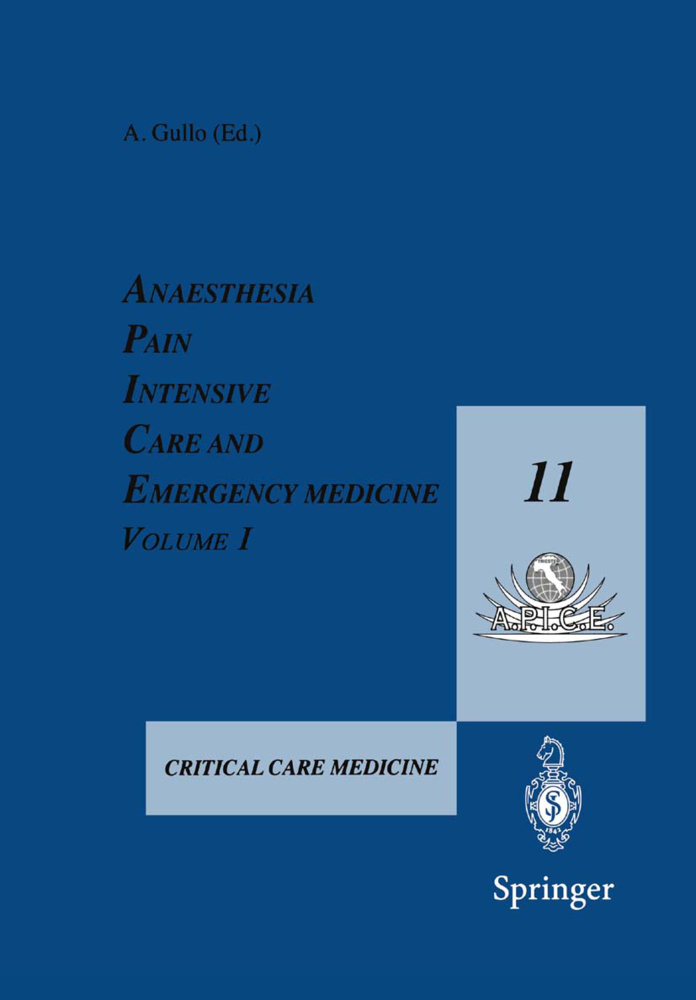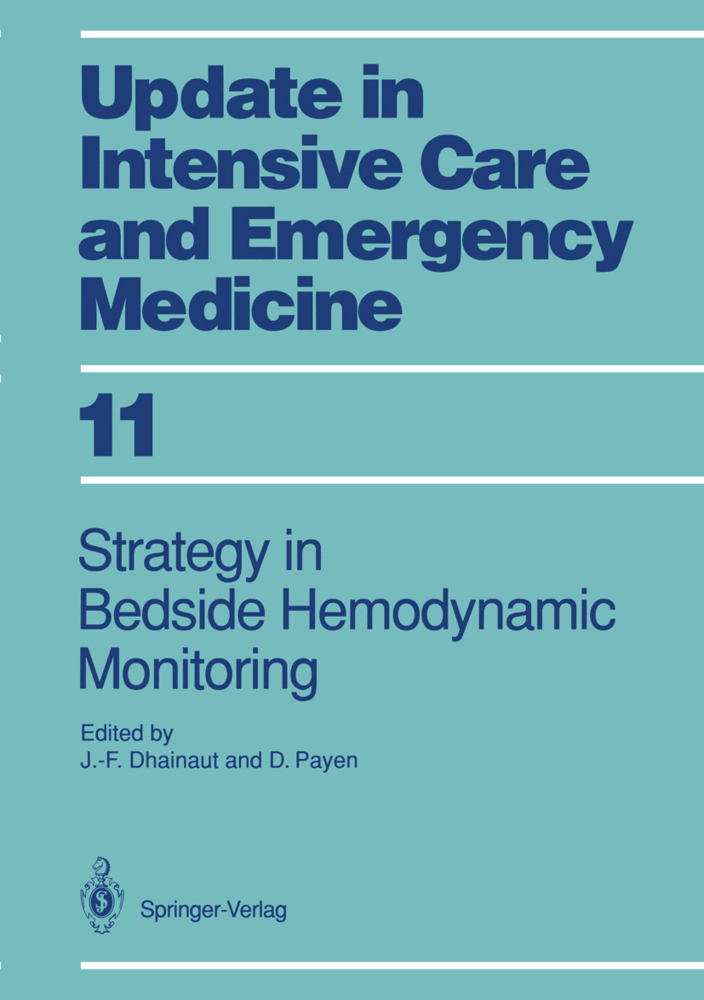Yearbook of Intensive Care and Emergency Medicine
Yearbook of Intensive Care and Emergency Medicine
The Yearbook compiles the most recent, widespread developments of experimental and clinical research and practice in one comprehensive reference book. The chapters are written by well recognized experts in the field of intensive care and emergency medicine. It is addressed to everyone involved in internal medicine, anesthesia, surgery, pediatrics, intensive care and emergency medicine.
Recognition of Bacteria and Bacterial Products by Host Immune Cells in Sepsis
Endotoxin Immune Status and Protection Against Multiple Organ Dysfunction Syndrome in the Surgical Patient
Cardiovascular Function in Septic Shock
Changes in Cardiac Signal Transduction in Septic Shock
Recent Advances in the Hemodynamic Therapy of Septic Shock
Immunotherapy
Cytokine Gene Polymorphism in Infectious and Inflammatory Diseases
Neutrophil-induced Oxidative Stress
Antioxidant Therapy in Critical Illness
Interleukin-10 Production during Septic Shock
Potential Role for Human Interleukin-11 in Bacterial Sepsis
Cellular Response to Inflammation and its Antagonism by ?2-Adrenoceptor Agonists
Sepsis Treatment and Prophylaxis with Immunoglobulins: A Critical Appraisal
Low Dose G-CSF to Augment Host Defense and Counteract Progression in Sepsis
Rethinking the Anti-Inflammatory Approach to Septic Shock
Immunotherapy of Severe Sepsis and Septic Shock: Is there a Future?
Gut Dysfunction
Intestinal Ischemia/Reperfusion: A Role for Mast Cells and Neutrophils
Bacterial Translocation: Cause or Effect of Multiple Organ Failure?
Gut Oxygenation after Reduced Oxygen Delivery
Peri-Operative Gastrointestinal Tonometry
Prokinetic Use to Facilitate Enteral Feeding
Early Postinjury Enteral Nutrition: Does it make a Difference?
Oxygen Availability
The Cell, the Mitochondrion, Oxygen and Sepsis
The Role of Microcirculation in Sepsis
Sepsis, Anemia, and Tissue O2 Availability
Critical Analysis of Venoarterial CO2 Gradient as a Marker of Tissue Hypoxia
Does Cardiovascular Optimization Reduce Mortality?
Hepato-splanchnic Blood Flow
Pressure-Flow Relationships in LiverVascular Beds during Sepsis
?-Adrenergic Drugs to improve Gastrointestinal Mucosal Blood Flow in Sepsis
Role of Nitric Oxide
Role of Nitric Oxide in the Pathogenesis of Gram-Positive Shock
Nitric Oxide Involvement in Septic Shock: Do Human beings behave like Rodents?
Nitric Oxide: Effects on the Airways
Respiratory Failure
A Broader View of ARDS
Strategies to minimize Alveolar Stretch Injury during Mechanical Ventilation
Lung Protective Ventilatory Strategies in ARDS
Positive End-Expiratory Pressure and Permissive Hypercapnia in ARDS
Methods to improve Matching between Ventilation and Perfusion during Ventilatory Support in ARDS
Pharmacologic Approach of Hypoxemia in ARDS Patients
Airflow Obstruction
Management of Life-Threatening Airflow Obstruction
Airway Resistance and Bronchodilator Responsiveness in ARDS
Mechanical Ventilation
Conditioning of Air in Mechanically Ventilated Patients
New Histopathological Aspects of Human Ventilator-Associated Pneumonia
Infectious Vignettes
Necrotizing Fasciitis
Acinetobacter Infections in Intensive Care Units
Fungal Infections
Fungal Infection in the Organ Transplant Recipient: Challenges and Opportunities
When to Start Antifungal Therapy in the Non-Neutropenic Critically Ill?
Cardiovascular Failure
Hemorrhage and Injury: Cardiovascular and Regional Blood Flow Responses
Myocardial Ischemia
Detection of Myocardial Viability and Inducible Ischemia with Dobutamine
Continuous Electrocardiographic Monitoring for Myocardial Ischemia
Do ACE Inhibitors have a Place in the Critically Ill?
Hematologic Failure
Critical Hematocrit
Acquired Coagulopathies
Liver Failure
Acetaminophen Overdose and Acute Liver Failure: Modern Management
Kidney Failure
Renal Rescue:Management of Impending Renal Failure
Continuous High Flux Dialysis: An Efficient Renal Replacement
Brain Failure
Non-traumatic Coma and Status Epilepticus in Infants and Children
Guidelines for Management of Severe Head Injury in Adults
Goal-Directed Therapy in Neurotrauma
How to Interpret Jugular Bulb Oximetry
New Treatment Modalities to Improve Outcome after Subarachnoid Hemorrhage
Analgesia and Sedation
Pain Measurement in Children
Pharmacokinetics and Drug-Protein Binding
Emergency Medicine
The Role of Emergency Medical Services in Mass Casualties
Overview of 10 Years (1983-1992) of Poisoning Data
Resuscitation
Resuscitation Decisions
Active Compression-Decompression Resuscitation
Outcome Prediction
Customized Probability Models for Early Severe Sepsis in Adult Intensive Care Patients
Neural Networks: A New Tool for Predictive Models
Today and Tomorrow
Expanding the Role of Intensive Care Medicine
Internet as a New Source of Information in the Intensive Care Field.
Sepsis
Sepsis and Inflammation: The Process of Dying from Critical IllnessRecognition of Bacteria and Bacterial Products by Host Immune Cells in Sepsis
Endotoxin Immune Status and Protection Against Multiple Organ Dysfunction Syndrome in the Surgical Patient
Cardiovascular Function in Septic Shock
Changes in Cardiac Signal Transduction in Septic Shock
Recent Advances in the Hemodynamic Therapy of Septic Shock
Immunotherapy
Cytokine Gene Polymorphism in Infectious and Inflammatory Diseases
Neutrophil-induced Oxidative Stress
Antioxidant Therapy in Critical Illness
Interleukin-10 Production during Septic Shock
Potential Role for Human Interleukin-11 in Bacterial Sepsis
Cellular Response to Inflammation and its Antagonism by ?2-Adrenoceptor Agonists
Sepsis Treatment and Prophylaxis with Immunoglobulins: A Critical Appraisal
Low Dose G-CSF to Augment Host Defense and Counteract Progression in Sepsis
Rethinking the Anti-Inflammatory Approach to Septic Shock
Immunotherapy of Severe Sepsis and Septic Shock: Is there a Future?
Gut Dysfunction
Intestinal Ischemia/Reperfusion: A Role for Mast Cells and Neutrophils
Bacterial Translocation: Cause or Effect of Multiple Organ Failure?
Gut Oxygenation after Reduced Oxygen Delivery
Peri-Operative Gastrointestinal Tonometry
Prokinetic Use to Facilitate Enteral Feeding
Early Postinjury Enteral Nutrition: Does it make a Difference?
Oxygen Availability
The Cell, the Mitochondrion, Oxygen and Sepsis
The Role of Microcirculation in Sepsis
Sepsis, Anemia, and Tissue O2 Availability
Critical Analysis of Venoarterial CO2 Gradient as a Marker of Tissue Hypoxia
Does Cardiovascular Optimization Reduce Mortality?
Hepato-splanchnic Blood Flow
Pressure-Flow Relationships in LiverVascular Beds during Sepsis
?-Adrenergic Drugs to improve Gastrointestinal Mucosal Blood Flow in Sepsis
Role of Nitric Oxide
Role of Nitric Oxide in the Pathogenesis of Gram-Positive Shock
Nitric Oxide Involvement in Septic Shock: Do Human beings behave like Rodents?
Nitric Oxide: Effects on the Airways
Respiratory Failure
A Broader View of ARDS
Strategies to minimize Alveolar Stretch Injury during Mechanical Ventilation
Lung Protective Ventilatory Strategies in ARDS
Positive End-Expiratory Pressure and Permissive Hypercapnia in ARDS
Methods to improve Matching between Ventilation and Perfusion during Ventilatory Support in ARDS
Pharmacologic Approach of Hypoxemia in ARDS Patients
Airflow Obstruction
Management of Life-Threatening Airflow Obstruction
Airway Resistance and Bronchodilator Responsiveness in ARDS
Mechanical Ventilation
Conditioning of Air in Mechanically Ventilated Patients
New Histopathological Aspects of Human Ventilator-Associated Pneumonia
Infectious Vignettes
Necrotizing Fasciitis
Acinetobacter Infections in Intensive Care Units
Fungal Infections
Fungal Infection in the Organ Transplant Recipient: Challenges and Opportunities
When to Start Antifungal Therapy in the Non-Neutropenic Critically Ill?
Cardiovascular Failure
Hemorrhage and Injury: Cardiovascular and Regional Blood Flow Responses
Myocardial Ischemia
Detection of Myocardial Viability and Inducible Ischemia with Dobutamine
Continuous Electrocardiographic Monitoring for Myocardial Ischemia
Do ACE Inhibitors have a Place in the Critically Ill?
Hematologic Failure
Critical Hematocrit
Acquired Coagulopathies
Liver Failure
Acetaminophen Overdose and Acute Liver Failure: Modern Management
Kidney Failure
Renal Rescue:Management of Impending Renal Failure
Continuous High Flux Dialysis: An Efficient Renal Replacement
Brain Failure
Non-traumatic Coma and Status Epilepticus in Infants and Children
Guidelines for Management of Severe Head Injury in Adults
Goal-Directed Therapy in Neurotrauma
How to Interpret Jugular Bulb Oximetry
New Treatment Modalities to Improve Outcome after Subarachnoid Hemorrhage
Analgesia and Sedation
Pain Measurement in Children
Pharmacokinetics and Drug-Protein Binding
Emergency Medicine
The Role of Emergency Medical Services in Mass Casualties
Overview of 10 Years (1983-1992) of Poisoning Data
Resuscitation
Resuscitation Decisions
Active Compression-Decompression Resuscitation
Outcome Prediction
Customized Probability Models for Early Severe Sepsis in Adult Intensive Care Patients
Neural Networks: A New Tool for Predictive Models
Today and Tomorrow
Expanding the Role of Intensive Care Medicine
Internet as a New Source of Information in the Intensive Care Field.
Vincent, Jean-Louis
| ISBN | 978-3-540-60552-2 |
|---|---|
| Artikelnummer | 9783540605522 |
| Medientyp | Buch |
| Copyrightjahr | 1996 |
| Verlag | Springer, Berlin |
| Umfang | XXIII, 858 Seiten |
| Abbildungen | XXIII, 858 p. 45 illus. |
| Sprache | Englisch |

